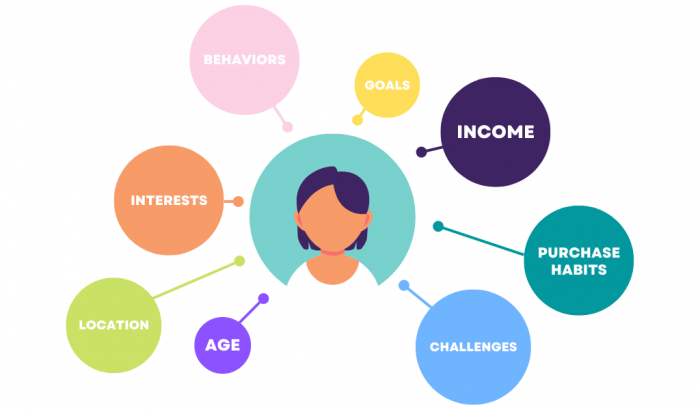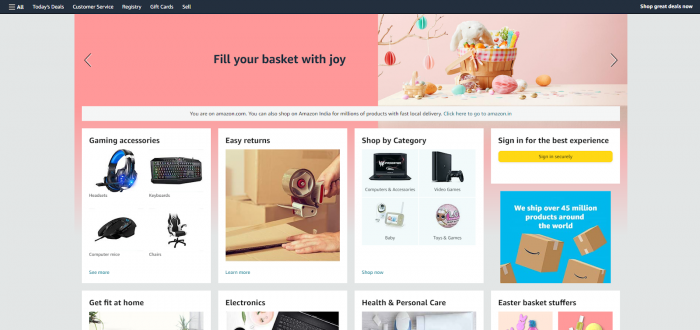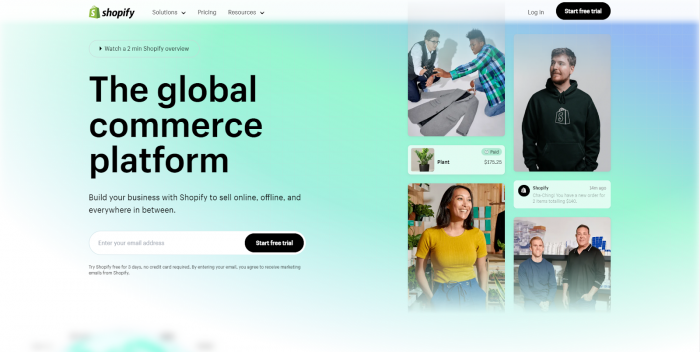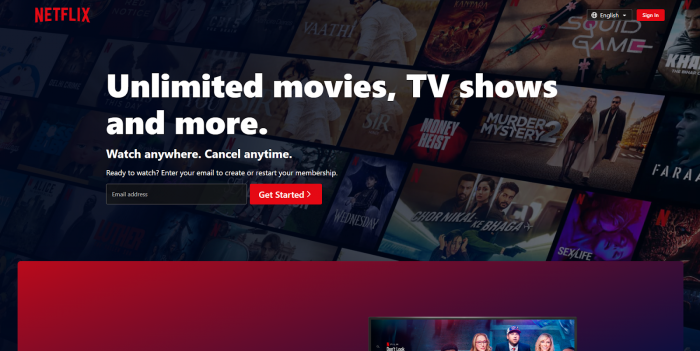In the world of eCommerce, customer segmentation is a vital element of success.
Data analytics and machine learning empower businesses to gain valuable insights into customer preferences and patterns, enabling them to personalize their marketing strategies and product offerings accordingly.
One of the most powerful tools for customer segmentation in eCommerce is Software as a Service (SaaS).
In this article we’ll discover the benefits of SaaS-driven customer segmentation and actionable strategies for eCommerce success.
Let’s delve into this.
Table of Contents
- Customer Segmentation: An Introduction
- 5 Key Benefits of Customer Segmentation
- SaaS and eCommerce: Thriving Together
- Using Customer Segmentation for eCommerce Success
- Examples of Customer Segmentation in eCommerce
- Best Practices for Implementing Customer Segmentation Strategies in eCommerce
- Future of Customer Segmentation in eCommerce
- Conclusion
What Exactly is Customer Segmentation?
Customer segmentation in eCommerce is the process of dividing customers into groups based on similar characteristics such as demographics, shopping behavior, and preferences.
💡 Customer segmentation refers to the process of sorting customers into groups to identify higher-value or higher-potential buyers.
There are four types of customer segmentation you can use:
👉 Demographic
👉 Psychographic
👉 Behavioral
👉 Geographic#AVASK #JargonBuster pic.twitter.com/zjwffgPrRA— AVASK (@avaskgroup) May 1, 2023
There are several types of customer segmentation, including demographic, geographic, psychographic, and behavioral, that can streamline your marketing strategy and boost sales.
Demographic segmentation: Involves dividing customers based on factors such as age, gender, income, and education level.
Geographic segmentation: Involves dividing customers based on their location, such as city, state, or country.
Psychographic segmentation: Involves dividing customers based on their values, interests, and lifestyle.
Behavioral segmentation: Involves dividing customers based on their behavior, such as their purchasing habits, brand loyalty, and online activity.
Targeting Your Way to Success: 5 Key Benefits of Customer Segmentation
1. Improved Customer Understanding
Customer segmentation enables businesses to gain a deeper understanding of their customers’ demographics, interests, and purchasing patterns by analyzing customer data.

Image Source: livesession.io
This information can be leveraged to create more effective marketing campaigns and boost customer engagement and loyalty.
For example, an event photography company may use customer segmentation to identify distinct customer groups, such as sports enthusiasts, fashion lovers, and corporate clients.
2. Enhancing Customer Engagement and Loyalty
The implementation of customer segmentation is advantageous as it can potentially lead to a rise in customer engagement and loyalty.
 Discount and loyalty card abstract concept vector illustration. Loyalty program and customer service, retail reward card, collecting points, frequent client, discount price abstract metaphor.
Discount and loyalty card abstract concept vector illustration. Loyalty program and customer service, retail reward card, collecting points, frequent client, discount price abstract metaphor.
By meticulously customizing marketing endeavors to satisfy the particular requirements and inclinations of each segment, organizations can establish a more individualised and pertinent customer experience.
Consequently, this can result in an escalation in customer gratification, repeated transactions, and enduring loyalty.
For instance, garment vendors may execute customer segmentation to distinguish diverse customer groups, like high-end fashion enthusiasts, casual clothing enthusiasts, and athletic clothing consumers.
The vendor can augment customer engagement and loyalty by developing marketing campaigns that are adapted to each group’s interests.
3. More Effective Marketing Campaigns
Customer segmentation is an invaluable tool that businesses can use to improve the effectiveness of their marketing campaigns. By tailoring marketing efforts to each segment’s unique needs and preferences, businesses can create more relevant and targeted campaigns.
This can lead to an increase in lead conversions, higher click-through rates, and better overall campaign performance.
In healthcare marketing, it is imperative for medical practices to attract and retain patients. To ensure that your messages reach the intended audience, it’s essential to leverage a doctor email list database for email marketing.
By segmenting your email list and sending personalized messages that resonate with patients, you can enhance engagement and foster stronger relationships with them.
This approach can bolster patient loyalty and satisfaction, which can ultimately translate to better patient outcomes. Additionally, developing a high-quality email list and gauging the success of your email campaigns are vital factors for achieving your marketing objectives.
In the pet industry, customer segmentation may be utilized to pinpoint different segments of customers, such as dog owners, cat owners, and bird owners.
By creating marketing campaigns that cater to the unique interests and preferences of each segment, companies can enhance the effectiveness of their campaigns and increase sales.
4. Improved Product Development
Customer segmentation can also be used to improve product development. By understanding the unique needs and preferences of each segment, businesses can develop new products and services that better meet the needs of their customers.
This can lead to increased customer satisfaction and loyalty, as well as a competitive advantage in the marketplace.
In order to identify different segments of customers, such as hikers, campers, and hunters, a company selling outdoor gear may use customer segmentation.
In order to develop products and services that better meet the needs of each segment, the company must understand the needs and preferences of each group.
5. Competitive Advantage
Businesses may gain a competitive edge in the market by employing customer segmentation. By gaining insight into the distinct preferences and requirements of their clientele, businesses can establish customized and relevant experiences that differentiate themselves from their rivals.
This, in turn, may lead to increased customer loyalty, repeat transactions, and long-term prosperity.
By leveraging customer segmentation to tailor direct marketing approaches and product development tactics, companies can remain competitive and fulfill the demands of their customers.
From Surviving to Thriving: How SaaS is Paving the Way for eCommerce Success
SaaS, or Software as a Service, is a cloud-based software delivery model that allows businesses to access software applications over the Internet.
SaaS offers several benefits for eCommerce businesses, including cost-effectiveness, scalability, and accessibility.
Cost-effectiveness: SaaS eliminates the need for businesses to invest in expensive hardware or software infrastructure. Instead, they can pay for the software on a subscription basis, reducing upfront costs.
Scalability: SaaS allows businesses to scale their software needs up or down as their business grows or changes. This means they can quickly and easily adapt to changes in customer demand or market trends.
Accessibility: SaaS software is available from anywhere with an internet connection, making it accessible to businesses of all sizes and locations. This also makes it a great tool for remote workers who may be on-the-go or working from various locations.
Using SaaS for customer segmentation allows businesses to collect, analyze, and store customer data in a centralized location.
This data can be used to create more accurate customer segments and to tailor marketing strategies to the unique needs of each group.
How to Use SaaS-Driven Customer Segmentation for eCommerce Success
E-commerce establishments can optimize customer segmentation through SaaS-fueled methodologies. Let’s delve into some effective techniques:
Data collection and analysis:
Utilize SaaS tools to amass data on customer preferences, tendencies, and habits. Analyze the data meticulously to unveil reoccurring patterns and trends in customer conduct. Apply this data to establish precise customer segments.
Creation of customer persona:
Establish thorough profiles for each customer segment based on their unique characteristics. These personas can be used to guide marketing and customer experience policies.
Personalization of customer experiences:
Leverage customer personas to design personalized marketing campaigns and product recommendations. Modify the customer experience based on the particular needs and preferences of each segment.
Execution of targeted marketing tactics:
Devise customized marketing campaigns for each customer segment. Utilize personalized messages and incentives to increase engagement and sales.
Measurement of the efficacy of customer segmentation:
Employ analytics tools to evaluate the impact of customer segmentation policies. Continuously refine and adjust the strategies based on customer feedback and data analysis.
Real-World Examples of SaaS-Driven Customer Segmentation in eCommerce
Customer segmentation is crucial for eCommerce triumph. The utilization of SaaS-based tools for customer data collection, analysis, and storage enables more precise customer segmentation and personalized marketing tactics.
Here are three authentic examples of enterprises that have effectively implemented SaaS-driven customer segmentation in eCommerce:
Case Study 1: Amazon
Amazon’s success lies in its ability to segment customers based on their purchase history and online behavior. Amazon uses personalized product recommendations to enhance customer experience and drive sales.

Amazon’s customer segmentation tactics are driven by its SaaS-based platform, Amazon Web Services (AWS), which collects and analyzes customer data to create accurate customer segments.
Case Study 2: Shopify
Shopify, a preeminent eCommerce platform, enables businesses to fabricate and govern their digital storefronts. They leverage their software-as-a-service (SaaS) empowered platform to compile and scrutinize consumer data, empowering enterprises to devise bespoke merchandise recommendations and promotional campaigns.

Shopify’s stratagem for consumer segmentation encompasses apportioning clients into factions predicated on their purchasing chronicles, browsing demeanor, and demographic statistics.
Subsequently, they employ this corpus of intelligence to devise individualized promotional campaigns and bespoke product recommendations, which eventuate in elevated sales and enhanced customer allegiance.
Case Study 3: Netflix
Netflix is another eCommerce giant that has leveraged the power of SaaS-driven customer segmentation. They use their proprietary algorithm to collect and analyze customer data, allowing them to create personalized recommendations for each user.

Netflix’s customer segmentation strategy involves dividing customers into groups based on their viewing history, genre preferences, and other behavioral data.
They then use this data to recommend movies and TV shows that are tailored to each user’s unique tastes, leading to increased engagement and customer loyalty.
Best Practices for Implementing SaaS-Enabled Customer Segmentation Strategies in eCommerce
While SaaS-driven customer segmentation can be incredibly beneficial, it’s important to follow best practices to ensure success.
Let’s explore some best practices for implementing SaaS-driven customer segmentation in eCommerce.
Identifying business goals and objectives
Before implementing customer segmentation strategies, it’s important to identify your business goals and objectives.
This will help you create more accurate customer segments that are aligned with your business objectives.
Defining Target Customer Segments
Once you have identified your business goals and objectives, you need to define your target customer segments.
This involves dividing your customer base into groups based on their behavior, preferences, and other relevant data.
Choosing the Right SaaS Platform
Choosing the right SaaS platform is crucial for successful customer segmentation.
You need to ensure that the platform you choose can collect, store, and analyze the data you need to create accurate customer segments.
Ensuring Data Privacy and Security
Data privacy and security are paramount when implementing customer segmentation strategies.
This is why you need a website privacy policy. In that, users will get information regarding how the websites will use their collected data. You need to ensure that you are collecting and storing customer data in a way that is compliant with relevant regulations and best practices.
Continuously Monitoring and Adjusting Customer Segmentation Strategies
Customer segmentation is not a one-time activity. It’s important to continuously monitor and adjust your segmentation strategies to ensure that they remain accurate and effective.
Challenges and Limitations of SaaS-Driven Customer Segmentation
While SaaS-driven customer segmentation can be incredibly beneficial, it’s not without its challenges and limitations. In this section, we’ll explore some of the common challenges and limitations of SaaS-driven customer segmentation in eCommerce.
Overreliance on Technology
One of the biggest challenges of SaaS-driven customer segmentation is the risk of overreliance on technology.
While technology can help you collect and analyze customer data accurately and efficiently, it’s important to remember that technology is not a substitute for human judgment and decision-making.
Inaccurate Data
Another challenge of SaaS-driven customer segmentation is the risk of inaccurate data.
If the data you are collecting is inaccurate or incomplete, your customer segments will be inaccurate as well. This can lead to ineffective marketing strategies and a poor customer experience.
Privacy Concerns
Privacy concerns are another limitation of SaaS-driven customer segmentation.
Customers are becoming increasingly aware of the data that companies are collecting about them, and they are becoming more concerned about how that data is being used.
As a result, it’s important to ensure that your data collection and segmentation strategies are transparent and compliant with relevant regulations.
Future of SaaS-Driven Customer Segmentation in eCommerce
As eCommerce continues to grow and evolve, SaaS-driven customer segmentation is likely to become even more important.
We’ll explore some of the emerging trends and technologies that are shaping the future of SaaS-driven customer segmentation in eCommerce.
Emerging trends and technologies
One of the emerging trends in SaaS-driven customer segmentation is the use of machine learning and artificial intelligence (AI) to create more accurate customer segments.
Machine learning algorithms can analyze vast amounts of data to identify patterns and create more accurate customer segments.
Another emerging trend is the use of omnichannel data to create more accurate customer segments.
By combining data from multiple channels, including social media, email, and mobile devices, businesses can create a more complete picture of their customers’ behavior and preferences.
Potential benefits and challenges
The potential benefits of SaaS-driven customer segmentation are clear: businesses can create more accurate customer segments, personalize their marketing strategies, and increase customer engagement and loyalty.
However, there are also potential challenges, including the risk of data breaches and the need to ensure compliance with privacy regulations.
Impact on the eCommerce industry
SaaS-driven customer segmentation is likely to have a significant impact on the eCommerce industry in the coming years.
Businesses that are able to effectively implement customer segmentation strategies will be better positioned to compete in the crowded eCommerce marketplace.
Conclusion
In conclusion, SaaS-driven customer segmentation is a powerful tool for eCommerce businesses looking to increase sales, customer engagement, and loyalty.
By following best practices and addressing common challenges and limitations, businesses can successfully implement customer segmentation strategies and stay ahead of the competition.
As eCommerce continues to evolve, SaaS-driven customer segmentation is likely to become even more important, and businesses that are able to effectively leverage this technology will be well-positioned for success.



